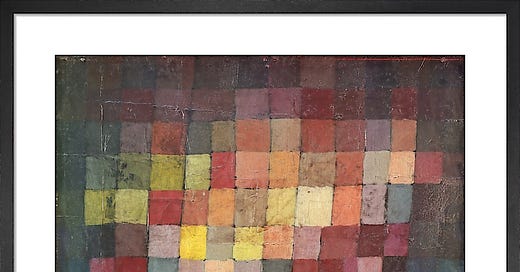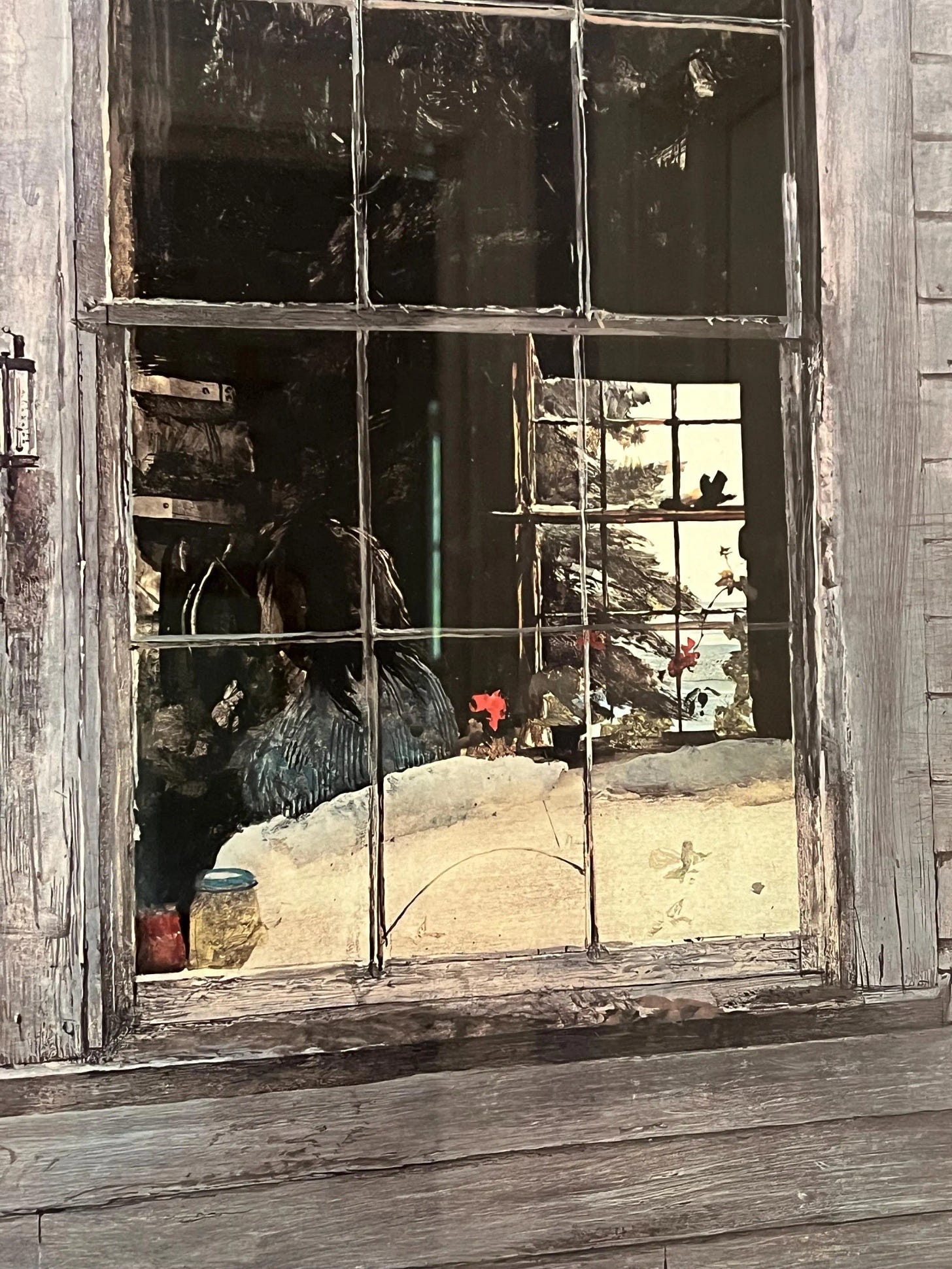When I first began painting, I reached instinctively for the bright colours, like most people do, but over time, it was the quiet colours that taught me how to see. The ones no one reaches for first. Slate, taupe, ash, ochre dulled by time. They are not the showstoppers, the brilliant gems that shimmer joy from the box, but they are the weight, the hush, the breath between notes in a flautist’s transcendent solo.
Without them, the brilliant colours scream too loudly and a painting made only of vibrance is imbalanced, even unbearable. The mousy, muted colours are like the quiet, hard, or sorrowful moments. They hold the structure, the depth, the mystery. And the bright ones? The bright hues bring sparkle and warmth and delight. Without both, you don’t really get the full story. It reminds me also of how a chord in music needs both tension and resolution, the root, third and fifth notes, to feel complete. In storytelling, it is very much the same. You need the crisis to make the triumph ring true. You need the dark creak of the barn floor to know the sun filtering through to it.
Think of a novel where everything goes right for everyone from page one. If there were one, it probably wouldn’t be very fulfilling—it would feel flat. When there’s tension, loss or challenge for the characters, even small victories can feel profound. The contrast in the narrative creates resonance. One of my lifelong favourites, Charlotte’s Web by E.B. White, is such a perfect example. It’s full of gentle beauty and affection—Wilbur’s innocence, Fern’s care, Charlotte’s artistry—but it’s also threaded through with mortality, loneliness, and the quiet ache of time passing. Charlotte’s death hits so hard not just because it’s sad, but because the whole story built this tender, everyday world where love and loss sit side by side. Without the muted tones—the fear, the waiting, the impermanence—Wilbur’s rescue wouldn’t shine as brightly.
That book really shows how stillness and sorrow can cradle joy, doesn’t it?
(she spun her name in the shadows)
In the Western culture I was raised in, we are taught to chase and celebrate brightness and to sweep the shadows under the rug. This has never sat well with me, and because of that I’ve been called melancholy. I’ve been called strange for seeing the sadder things like they are full of beauty. In time I’ve come to believe that what we call melancholy is often just honesty and an acceptance of the entire spectrum of reality—and reality is truth, and truth is beauty. I need the muted tones. I need the quiet palette, the almost-grey blue, the worn linen white. I need the parts that don’t perform—but instead hold everything in place. I need them, want them, because they are the things that make me whole. That make life whole.
(look closer, the whisper says,
this is where the soul lives)
A life painted only in highlights will never hold. It will disappear into the paper. It is the darker tones—the layered, muddied, muted shadows—that gives it permanence. Let it be soft. Let it be unspectacular. Let it gather like fog at the edge of morning. These are the colours that carry us when the dazzle has faded. These are the tones that teach us how to stay.
(this too belongs, says the silence)
I sometimes write about the hard things not to dwell in them, but because they, too, are part of the palette. Because truth has texture. Because a story without shadow has no shape.
(even the sorrow is luminous, the voice says. even this)
We’ve been taught to fear the muted tones. To see sadness, grief, or loneliness as stains on the canvas. They don’t have to be. They’re just colours no one taught us to name. I’ve learned to welcome them. Not as enemies, but as companions. Grief, seated quietly beside me. Loneliness, a steady shadow beside me on the path. Sadness, resting her hand in mine. They do not steal the light. They teach me how to see it.
She spun her name in the shadows
Look closer, the whisper says
this is where the soul lives
This too belongs, says the silence
Even the sorrow is luminous, the voice says.
Even the brush dipped in shadow knows how to sing
Just a few thoughts from my notebook writings this morning. Would love to know what you’re thinking about.
Or, a one-time donation is always appreciated. You can buy me a coffee.
🕯️ ✨








Ahhhh. That’s what I think.
Thank you.
Balance!